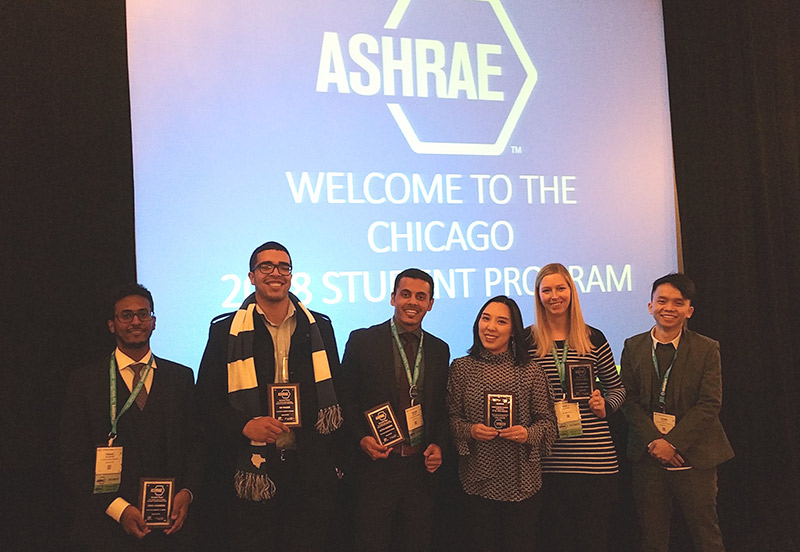January 31, 2018

The ISBD competition requires a multidisciplinary team to design an energy efficient sustainable project approaching a "Zero Energy" building with minimized energy demands for HVAC and all other technical systems that could be satisfied with locally available or building-installed renewable energy sources (RES). The 2017 competition focused on a single story meteorological station located on the Diego Ramirez Islands, a small archipelago off the southern Coast of Chile. The building site presented a unique set of challenges including the availability of materials, limitation of possible locations for the new building, and the general difficulties of designing for a year-round cold climate.
The team applied and tested design strategies based on ASHRAE Standard for the Design of High-Performance Green Buildings: 189.1-2014. The envelope was optimized using Structural Insulated Panel (SIP) construction with integrated phase change materials, and a trombe wall. A rainwater harvesting system with a small scale water treatment facility was designed, which provides all the potable water for the building and its inhabitants. The electric loads associated with the plug loads and lighting were greatly reduced through the use of smart controls including daylighting harvesting, and occupancy sensors.
The selected HVAC system is a Variable Refrigerant Flow (VRF) with a Dedicated Outdoor Air System (DOAS). A required data server room in the building produces excess heat, resulting in a high level of cooling loads despite the climate. The team utilized this heat by connecting an Energy Recovery Ventilator (ERV) directly to the return air from the data room, and using this air to preheat the supplied outdoor air through the DOAS. Overall, the team was able to reduce the energy loads by 50% over the baseline. The remaining energy was supplied by on-site renewables, with most of the power coming from two 50 kW wind turbines
